Juki LZ-2290A-SR Handleiding
Juki
Naaimachine
LZ-2290A-SR
Bekijk gratis de handleiding van Juki LZ-2290A-SR (154 pagina’s), behorend tot de categorie Naaimachine. Deze gids werd als nuttig beoordeeld door 48 mensen en kreeg gemiddeld 5.0 sterren uit 24.5 reviews. Heb je een vraag over Juki LZ-2290A-SR of wil je andere gebruikers van dit product iets vragen? Stel een vraag
Pagina 1/154

ENGLISH
LZ-2290A-SR / IT-100E / SC-916
INSTRuCTIoN MANuAL

i
1. NAME oF EACH CoMPoNENT .................1
2. SPECIFICATIoNS ........................................2
2-1. Specications of the machine head .............2
2-2. Specications of the electrical box ..............2
3. STITCH PATTERN TABLE ..........................3
3-1. Initial value of the stitch pattern and the
table .................................................................4
4. INSTALLATIoN ............................................6
4-1. Installation of the sewing machine head .....6
4-2. Removing the needle bar stopper ................7
4-3. Attaching the knee-lifter ................................7
4-4. Adjusting the height of the knee lifter ..........7
4-5. Installing the electrical box ...........................8
4-6.
Connecting the power switch cord
(Japan and general export area)...................... 8
4-7. Installing the operation panel (IT-100E) .......8
4-8. Connecting the cords ....................................9
(1) Preparation of wiring .........................................9
(2) Connecting the connectors ............................ 10
4-9. Attaching the connecting rod ......................14
4-10. Adjustment of the pedal .............................15
4-11. Installing the thread stand .........................15
4-12. Installing the bird’s nest prevention
(CB) type sewing machine ...........................15
4-13. Lubrication ..................................................17
4-14. Test run .......................................................18
(1) Turn ON the power ......................................... 18
(2) How to operate the pedal ............................... 18
5. PREPARATIoN BEFoRE SEWING ..........19
5-1. Inserting the needle ....................................19
5-2. Removing the bobbin case ..........................19
5-3. Winding the bobbin thread ..........................19
5-4. Placing the bobbin case and the bobbin ...20
5-5. Threading the machine head .......................21
5-6. Adjusting the stitch length ..........................21
5-7. Adjusting the condensation stitching ........21
6. HoW To uSE THE oPERATIoN PANEL .22
6-1. Names and functions of
the respective sections ................................22
6-2. Before setting the pattern ............................24
(1) Limitation of the max. zigzag width ................ 24
(2) Setting the reference of stitch base line ......... 26
(3) Setting the feed amount ................................. 27
6-3. Basic screen ................................................28
6-4. List of the display pictographs of
each screen ...................................................29
6-5. Setting the sewing pattern ..........................52
(1) Selecting the zigzag pattern .......................... 52
6-6. Setting of the sewing shape ........................54
(1) 2-step zigzag,
3-step zigzag and 4-step zigzag stitch........... 54
(2) Scallop stitching ............................................. 56
(3) Blind stitch sewing ......................................... 59
(4) Custom pattern stitching ................................ 60
(5) T stitch, left ..................................................... 61
(6) T stitch, right................................................... 62
(7) Pattern 1 ........................................................ 64
(8) Pattern 2 (fagoting) ........................................ 65
(9) Pattern 3 ........................................................ 67
(10) Pattern 4 ...................................................... 69
6-7. Setting of the sewing speed ........................71
6-8. Reverse feed stitching .................................71
(1) Standard condensation .................................. 72
(2) 2-point condensation ...................................... 74
(3) Condensation custom .................................... 75
(4) Comparision table of
the reverse stitch of each shape .................... 76
6-9. Selection of the kind of stitching ................77
(1) Overlapped stitching ...................................... 77
(2) Programmed stitching .................................... 78
6-10. Custom pattern ...........................................80
(1) Custom pattern setting ................................... 80
(2) New creation of the custom pattern .............. 81
(3) Custom pattern edit ........................................ 82
(4) Pattern sewing registration,
custom pattern copy and
custom pattern deletion of the custom pattern
.... 82
6-11. Condensation Custom ...............................84
(1) Condensation custom setting ......................... 84
(2) Condensation custom edit ............................. 85
6-12. Pattern stitching .........................................87
(1) Setting the pattern stitching ........................... 87
(2) Registering the pattern stitching .................... 89
(3) Copy and deletion of the pattern stitching ...... 89
6-13. Continuous stitching .................................91
(1) New creation of the continuous stitching ....... 91
(2) Continuous stitching edit ................................ 92
(3)
Copy and deletion of the continuous stitching
.... 94
6-14. Cycle stitching ............................................95
(1) New creation of the cycle stitching ................. 95
(2) Cycle stitching edit ......................................... 95
(3) Copy and deletion of the cycle stitching ......... 97
(4) Teaching ......................................................... 98
(5) Performing the constant-dimension stitching
using the cycle stitching ................................. 99
6-15. Counter ........................................................99
(1) Thread trimming counter ................................ 99
(2) Bobbin thread counter .................................... 99
6-16. Information ................................................100
(1) Sewing common data .................................. 101
(2) Sewing management information ................ 103
(3) Communication mode .................................. 106
6-17. Setting for functions ................................ 110
(1) How to change over to
the function setting mode..............................110
(2) Function setting list ......................................113
(3)
Detailed explanation of selection of functions
....117
6-18. External interface ....................................122
(1) Media slot ..................................................... 122
(2) Ethernet port ................................................ 122
(3) RS-232C port ............................................... 122
(4) General input port (Production control switch
connecting connector) ................................. 122
6-19. Setting the maximum sewing speed ....123
6-20. Panel memory switch setting ................123
7. SEWING ...................................................125
7-1. Adjusting the thread tension .....................125
7-2. Adjusting the pressure of the presser foot ....
126
7-3. One-touch type reverse feed stitching
mechanism ..................................................126
7-4. Pattern 2 (fagoting) sewing .......................127
7-5.Hand switch .................................................128
CoNTENTS

ii
8. STANDARD ADJuSTMENT ....................129
8-1. Adjusting the amount of oil in the hook ..129
8-2. Adjusting the amount of
lubricating to face plate section ...............129
8-3. Adjusting the height of the presser bar .....130
8-4. Adjusting the micro-lifting
mechanism of the presser foot .................130
8-5. Height and inclination of the feed dog .....130
8-6. Hook adjusting mode .................................131
8-7. Attaching / removing the hook ..................132
8-8. Adjusting height of the needle bar ...........133
8-9. Adjusting the needle-to-hook timing
and the needle guard .................................133
8-10. Adjusting the stop position of
the needle ....................................................134
8-11. Adjusting the thread trimmer ..................134
8-12. Adjusting the needle thread
feeding device ............................................135
8-13. Adjusting the bird's nest prevention
(CB) type wiper ...........................................136
8-14. Replacing procedure of the bird’s nest
prevention (CB) type presser knife ...........137
9. MAINTENANCE .......................................138
9-1. Replacing the power fuse ..........................138
9-2. Adjusting the contrast of
the operation panel display .......................139
9-3. Draining
(Bird’s nest prevention (CB) type only) ....139
9-4. Cleaning the dust bag
(Bird’s nest prevention (CB) type only) ....139
9-5. Cleaning the cooling fan installed on the
under cover .................................................140
9-6. Cleaning the hook section .........................140
9-7. Cleaning the rear cover of
the control box ...........................................140
9-8. Cleaning the operation panel screen ......140
9-9. Replacing procedure of
the hook shaft oil wick ...............................141
9-10. Applying the exclusive grease ................141
9-11. USB port ....................................................142
10. AT A TIME LIKE THIS ! ..........................143
11. ERRoR DISPLAY...................................144
11–1. Error code list (Error display in panel) ....145
12. TRouBLES AND CoRRECTIVE
MEASuRES.............................................149
Product specificaties
| Merk: | Juki |
| Categorie: | Naaimachine |
| Model: | LZ-2290A-SR |
Heb je hulp nodig?
Als je hulp nodig hebt met Juki LZ-2290A-SR stel dan hieronder een vraag en andere gebruikers zullen je antwoorden
Handleiding Naaimachine Juki

16 November 2024
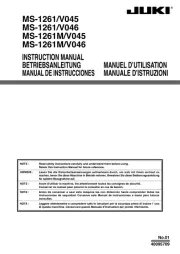
16 November 2024

16 November 2024
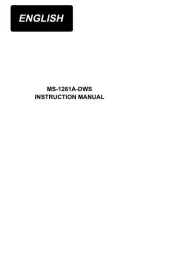
16 November 2024
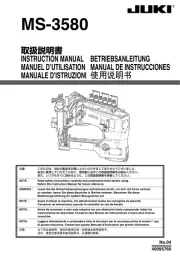
16 November 2024
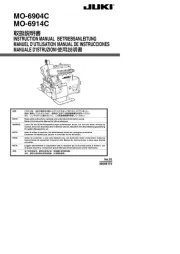
16 November 2024
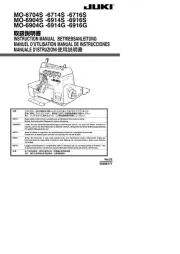
16 November 2024
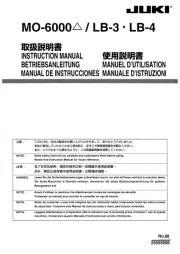
16 November 2024
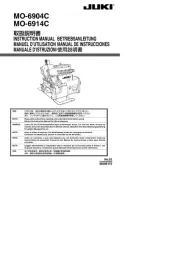
16 November 2024
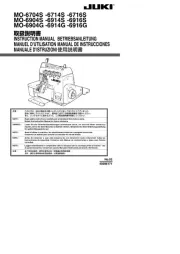
16 November 2024
Handleiding Naaimachine
- Hofmann
- Yamata
- Solac
- Meister Craft
- Janome
- Singer
- Privileg
- Hema
- Durkopp Adler
- Feiyue
- Veritas
- Husqvarna-Viking
- Crofton
- Empisal
- Vendomatic
Nieuwste handleidingen voor Naaimachine
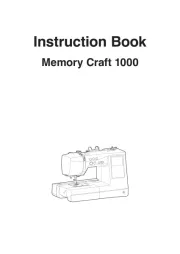
8 September 2025
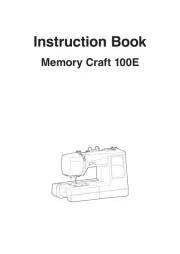
8 September 2025
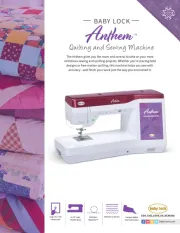
26 Augustus 2025
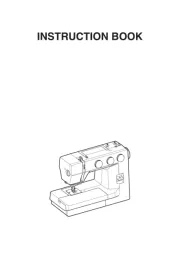
7 Juli 2025
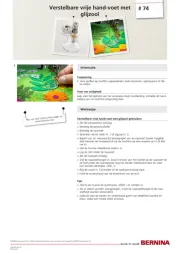
4 Juli 2025
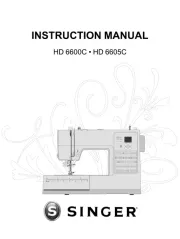
4 Juli 2025
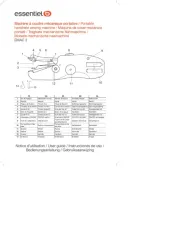
15 Juni 2025
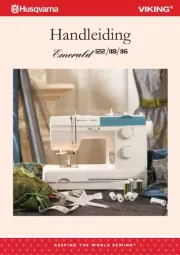
23 Mei 2025
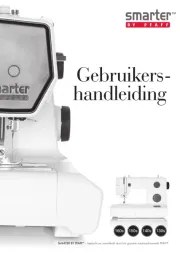
16 Mei 2025

15 Mei 2025